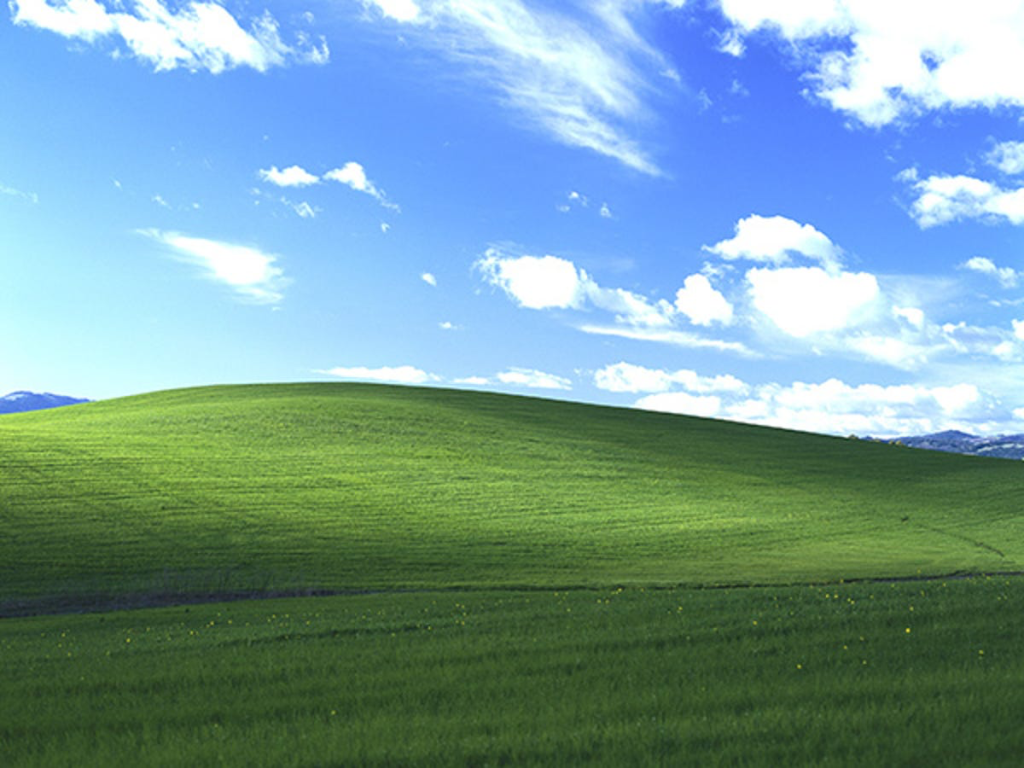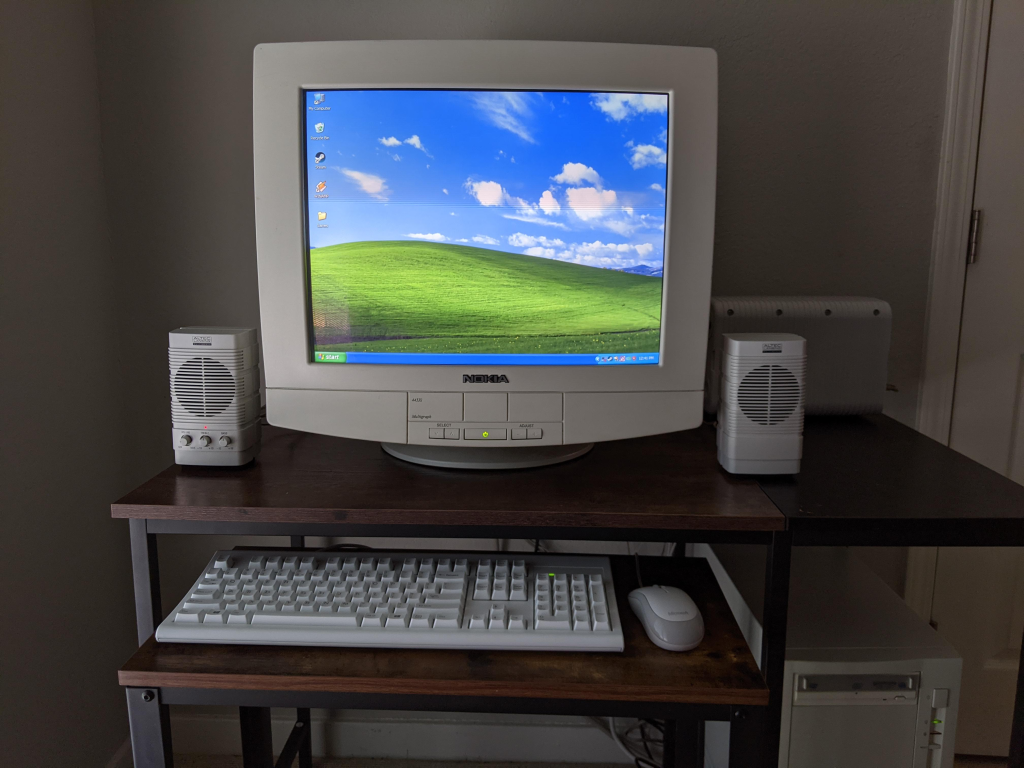
What is your digital first memory? For many, it’s hard to pin-point. But when it comes down to the first digital image I can distinctly recall, it would be the serene rolling hills and piercing blue sky of Charles O’Rear’s Bliss. Submitted on Microsoft’s stock image site Corbis, Bliss was licenced exclusively by the company as the default background for the newest edition of its PC operating system (OS), Microsoft XP.
I’d bet that every digitally engaged person has seen this image at least once. Actually, I know they have. In its six-year tenure as XP’s most iconic image Bliss has become the most viewed image known to human history.
And although until recently I didn’t know its name, maker, location, or backstory this photograph holds an immovable place in my early memory. The old study in my childhood home where I first encountered the internet playing kid’s games online – my dad turning on our chunky Windows PC and the screen lighting up with the landscape of Bliss. I remember thinking, small as I was, what is that world? And what’s beyond it?

If anything, the story of Bliss is symptomatic of the way in which the digital has fostered a visual familiarity of a previously unfathomable magnitude. Whilst the pre-digital spread of pop culture through magazines, newspapers and television had fostered the notion of the mass image, the concept was catapulted to new heights by the rise of the internet and personal computing.
With the spread of the mass image inevitably comes its decontextualisation. Although billions of people have seen Bliss countless times at work, home, or school, very few would have known anything about the photo itself. In fact, despite licencing the photo for XP, Microsoft employees knew little to nothing about the background of the image itself.
In an interview with CNet, Charles O’Rear describes receiving an email from Microsoft engineers asking about Bliss – where it was taken and how. The engineers admitted their theories to O’Rear: that the image was mainly Photoshopped or taken close to the company’s headquarters near Washington. With hindsight we know that none of these theories were close to the truth.

Bliss was taken in 1996 and shows a landscape in California’s Napa Valley wine country. Contrary to popular suspicion, O’Rear maintains that Bliss is entirely untouched and free of editing. With its vibrant colours, perfect patches of sun and serenity, it’s no wonder Bliss is often thought to be the product of retouching. And with the rise of widespread photo retouching, our suspicion and distrust towards Bliss is not unfounded.
So, what does our collective experience with Bliss have to say about our relationship with the digital? Perhaps most glaring is our sense of distrust, and how accustomed many of us have become to image manipulation. When discussing the topic of my blog this week with a friend, they expressed shock at the fact that one of the most-known digital images was unedited.
For me, the place of Bliss in the worldwide collective memory of billions is what best defines its place in digital histories. On the screens of computers in the White House’s situation room, millions of at home PCs and work desktops, and ironically, in a top-secret North Korean power plant. Perhaps its greatest power has been its ability to traverse the international borders and political tensions of the twenty-first century. That’s a lot of work for a default desktop wallpaper!
Back in my childhood study, sitting at the PC and watching the screen load I could never have known the reach of that idyllic landscape. But then again, it’s just a photo, right?
References
Hay Newman, Lily. “The Most Famous Desktop Wallpaper Ever Is a Real, Unaltered Photo.” Slate Magazine, April 11, 2014. https://slate.com/technology/2014/04/charles-o-rear-is-the-photographer-who-took-the-windows-xp-wallpaper-photo-in-napa-valley.html.
Microsoft, and Charles O’Rear. Bliss. 1996. Photograph.
Savvides, Lexy. “It’s Bliss: Behind the Iconic Windows XP Photo.” CNET. CNET, March 30, 2014. https://www.cnet.com/tech/computing/its-bliss-behind-the-iconic-windows-xp-photo/.



In relation to the first digital memory the post makes me think how universal this image had become. The moment you point out ”Bliss” as the first digital image you remember I can’t think of anything else. I enjoyed reading your personal story (that I could so much relate to) and how you reveal the process behind the WindowsXP image.
I think the conclusion about being used to image manipulation and distrust present in our society was very interesting. In a way I found it calming that such an impactful image, present in our collective memory has been completely unedited.
Also, the fact that O’Rear didn’t make a fortune on his photograph (as far as I’m concerned) seems to be a good symbol of how makers of the digital culture can be used by bigger companies.